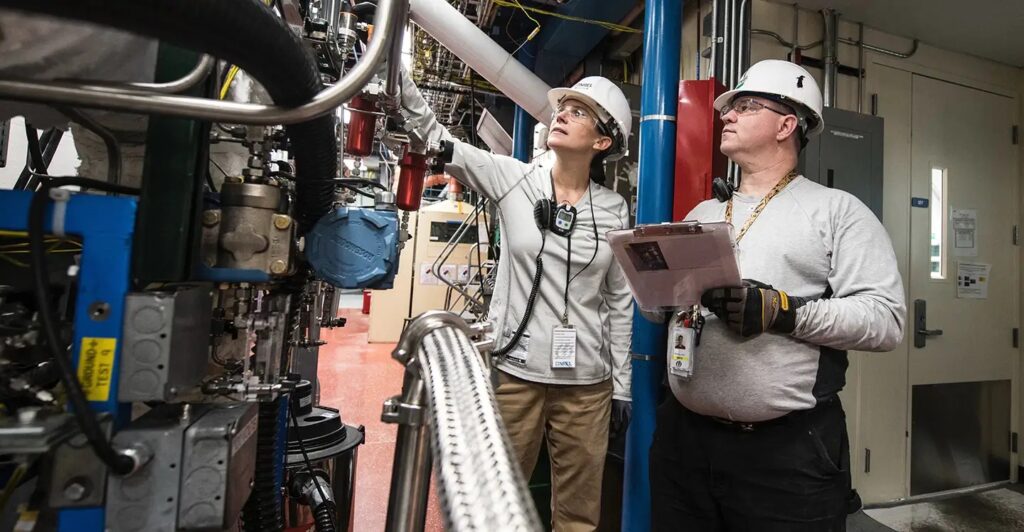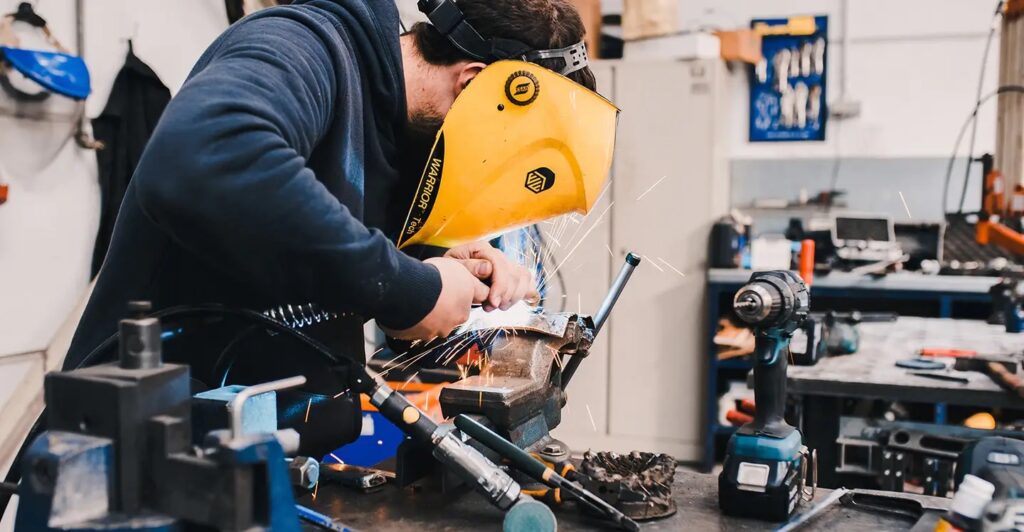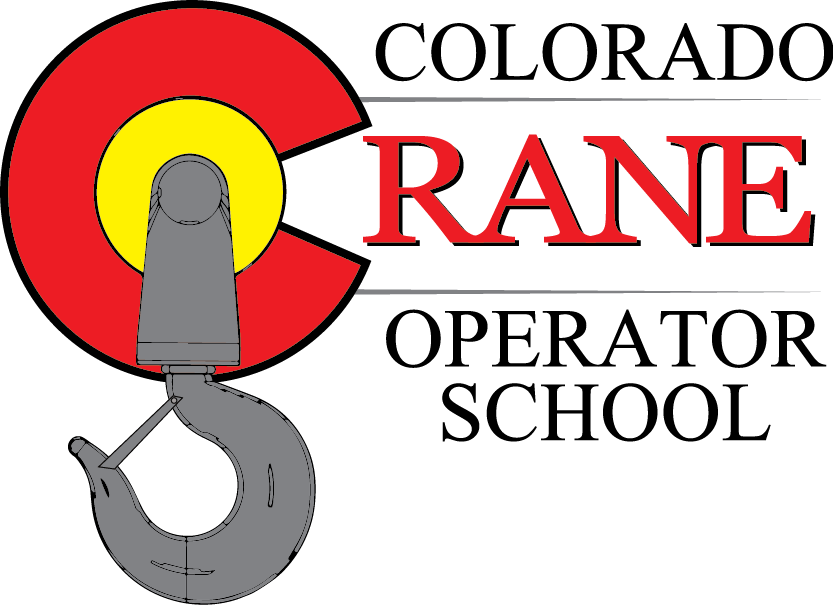Originally posted on American Machinist
Thousands of workers are injured on the job every year, and many of these accidents are attributable to improper training or unsafe working environments. According to the U.S. Bureau of Labor Statistics, the majority of workplace injuries resulted from falls, slips, trips, or accidents, as well as overexertion, which lead to sprains, strains, or muscle soreness.
These types injuries are far too common in machine shops, as workers operate heavy machinery daily. While it is unfortunate that so many of these injuries occur, it’s better news that many of these situations can be avoided by enforcing proper workplace safety standards.
Machine shop managers probably encounter safety messages, or even conversations, every day — but how often do these lead to improved workplace security and worker health? Too often, safety training is treated as a formality, glossed over during onboarding and rarely (if ever) revisited.
This can create an extremely unsafe working environment. The truth is that safety training is not a one-time experience; it must be a fundamental part of workplace standards in every machine shop, to avoid common accidents or potentially fatal injuries.
This is how you can coordinate with your shop managers, safety professionals, workers, and other decisionmakers, to establish a culture of safety at your operation.

1. Lead by example — First and foremost, start conversations by setting a good example. Remember that employees are looking up to you as a leader; plus, by enforcing rules and sticking to them yourself, you can actually gain greater respect from your team members.
According to a Gallup survey, employees are far more likely to stay at a job if a manager hold them accountable for their performances and followed or enforced those rules themselves. So, every rule or policy you impose — from work rules to personnel policies — should set a sound example for your workers.

2. Ask questions that engage — Some safety measures are fairly obvious and clear, like wearing protective gloves and eyewear or non-slip work boots. But others may not be so straightforward – and your shop’s current solutions may not be as effective as you’d like them to be.
Get to the bottom of the most pressing safety issues and identify the weakest links in your safety program. You will need to converse directly with workers. One of the best ways to initiate safety conversations is to talk about current problems and respond to any questions that people have. Often, those questions will contain the best insight into the real problems that your shop is facing, and the workers may have some useful suggestions for ways to solve the issue, too.
If you need help to get the conversation started, ask some of these questions to team leaders and employees:
- Which areas of the workplace do you feel are the least safe?
- What are the safety practices that are not heavily enforced or followed?
- Do you feel that you have received adequate safety training to know how to respond in common emergency situations?
- What would you suggest we do to make this place safer?
- Do you feel that some safety precautions slow down productivity? If so, why?

3. Prioritize well-being over productivity — According to that same Bureau of Labor Statistics report, the leading cause of on-site injuries was overexertion. When employees are stressed, overworked, or straining to meet a deadline, they often will rush or make simple mistakes – and could put at risk their own safety (and other’s safety.)
If you want to promote a culture of safety, you must make sure that human well-being is always more important than deadlines or productivity. Although these things are certainly important, no one should compromise his or her own health or safety simply for the sake of efficiency.
People cut corners when they’re under pressure to meet an upcoming deadline. This creates circumstances in which mistakes are made that could put employees at risk. Therefore, it is important to convey that everyone’s safety is far more important than finishing a project according to a certain schedule. This is something that must be discussed primarily with team leaders and managers so they can set more reasonable deadlines to make workplace safety the top priority.
You also may need to re-evaluate productivity expectations to ensure that they are realistic and attainable.

4. Share positive and negative stories. If you ever have attended a meeting on safety regulations, you know these can be boring and rather unproductive, unfortunately. It is important that leaders look for ways to make everyone engaged in the discussion of safety, so that they will pay attention to the information being shared.
One of the best ways to do this is to make safety considerations more personal by sharing real stories. Don’t just spit out statistics or talk in vague terms about safety principles. Instead, use real examples from your shop to drive home the major points about shop safety.
For instance, share a personal anecdote of a situation wherein you may have (or could have) injured yourself due to unsafe work practices. You also may want to discuss any recent workplace accidents or injuries in your operation.
Everyone shares responsibility for establishing and maintaining safety standards in order to create a safe working environment for everybody. But, this will rarely happen naturally.
Leaders must take charge by asking the right questions and getting everyone thoroughly engaged in the conversation about workplace safety. You can start to open doors for these conversations, discover underlying issues, and devise practical solutions.
Troy Clark is the owner of the MSC Safety Solutions, and a developer safety training programs designed to achieve and maintain a well-informed workforce, from top management to field personnel. MSC Safety Solutions offers safety training courses, in-person classroom courses, and construction safety consultant services to help organizations find the solutions they need to create a safer workplace for everyone.
Do you have questions about your job site safety, crane training or inspections? We’re here to help!




